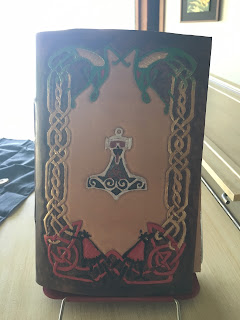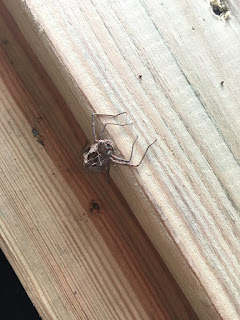Author: Nancy SantoPietro
©1996
It's funny - this will be the third time now that I've written up a report on this book. For my Architecture History class, we were asked to make a poster and presentation about a book, and since I was already in the midst of reading this one, I decided to do my project on it. It's actually giving me a really interesting opportunity, as for the presentation component, part of my project will include talking about ways in which I have used feng shui principles in the design of my room at home. However, I wanted to do a post about it specifically for this blog, seeing as my readership here is likely more metaphysically-inclined than my classroom peers.
The short version: this is a great book.
The long version: Nancy SantoPietro is one of only a few women in the US trained and authorized to practice feng shui professionally. Her book is forwarded by Professor Lin Yun, the founder of the Black Sect of Tantric Buddhism, and under whom she studied. Known internationally for her work, and former Chairperson of the first feng shui studies department in the country, SantoPietro is one of the foremost western experts and practitioners.
Yun's forward begins by describing a little of his sect of Buddhism, how it intersects with feng shui, and his experiences working with SantoPietro. This transitions into SantoPietro's introduction, which summarizes some of feng shui's history and its place in the modern world.
The first chapter covers the basics: fundamental principles and theories, how to quickly and easily sketch a floor plan of a building, and how to apply the bagua chart to that drawing. She also describes how to begin analyzing the relationship between floor plan and chart.
Chapter two starts getting into intentions, and how to narrow down one's focus in what changes to make. It also summarizes general categories of the kinds of things to look out for and consider altering.
Chapter three takes the reader through the nitty-gritty of designing the bedroom, bathroom, and kitchen, some of the most important spaces in the home. SantoPietro explains the impact that each of these has on one's life, and where design decisions can have a significant impact on one's health, wealth, and relationships.
The fourth chapter takes the reader through other spaces (the home office, dining room, living room, etc.) and offers low-cost but high-impact solutions for the problems that can occur there. These principles are really ones which can be applied in any space to produce significant results.
Chapter five covers the role of color, and six describes specific obstacles one might be facing, and where to look in one's home for design issues that could be compounding those obstacles. It also covers transcendental cures, which are in essence rituals written in a feng shui-specific context, but which incorporate elements like mantras, meditations, sympathetic magick, and other elements which western Pagans are likely already somewhat familiar with.
The seventh chapter deals with sacred space - what it is, why we need it, and how to go about designating a truly sacred space in the home. SantoPietro goes into detail about altars, both religious and secular, and provides lists of correspondences for crystals and essential oils.
Finally, the eighth chapter gives real examples of situations which SantoPietro's clients have faced, how SantoPietro advised them to adjust their living spaces, and the end results. This was less of an anecdotal advertisement for her work, and more of a step-by-step example about what it actually can look like to analyze a living space and change it, and thereby also change one's life. Her example stories cover a wide variety of living situations and types of people, so chances are good that there are relatable elements one can pick up on.
I will be up-front: I do not agree 100% with every single piece of advice in SantoPietro's book. There are things as an individual and as a designer-to-be which I would do differently. However, with that being said, this is an excellent manual on feng shui; it is extremely comprehensive while still being easy to follow, and there are lots of diagrams to visually illustrate the types of changes the author refers to. In general, she does a very good job of explaining the thought behind a feng shui principle, rather than just providing rules with no context, and it is clear that she is very well-versed in her practice.
Whether you are just getting into feng shui or are already familiar with the subject, this text is a great resource. If you have any interest in using feng shui at all, definitely consider giving this book a look.


















